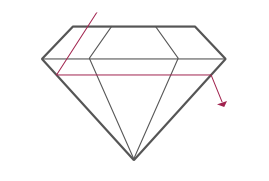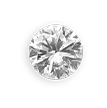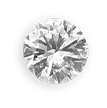Diamond Guide: The 4cs Of Diamonds
A breathtaking center stone in an engagement ring or a sparkling accent in a delicate gold pendant, diamonds are forever treasured and always on trend. Read on to learn how to assess the quality of a diamond, so you can choose the right stone for your budget and style.

Buying A Diamond
Everyone wants a diamond with optimal fire, sparkle and brilliance. With so many options, however, choosing a quality stone can feel overwhelming. While everyone's diamond search is unique, it helps to understand what makes one diamond superior to another, so you can make an informed purchasing decision.
What Are The 4cs Of Diamonds?
The 4Cs of diamonds are the universal methods for assessing the excellence of any diamond, anywhere in the world. With every diamond, cut, color, clarity and carat weight work to determine its value. Basically, the 4Cs of diamonds are how gemologists measure diamond quality.
💎 Diamond Cut
This describes the polish, symmetry and proportions of the diamond, which ultimately determine its brilliance, fire and sparkle. A skilled cutter uses precise workmanship and artistry to fashion a diamond so it delivers maximum visual effects, including brightness (external and internal reflected light), fire (the scattering of light into each color of the rainbow), and scintillation (the sparkle and pattern of light produced by reflections within the diamond).
Diamond Cut Quality
The cut grade depends on the quality of a diamond’s finish, proportions and symmetry. When a rough diamond reaches the hands of a diamond cutter, they create the shape and cut of the diamond. A well-cut diamond will appear brilliant and sparkly, while a poorly cut diamond may appear dark and dull.
Types Of Diamond Cuts
If the cut of a diamond is too deep, some light escapes through the side of the stone. If the cut is too shallow, light escapes through the bottom of the stone before it can be reflected, thus reducing its brilliance. The pattern of cut surfaces — or facets — represents the quality of the cut and has a direct effect on the overall brilliance. With well-proportioned cuts, light reflects from one facet to another, then back through the top of the diamond.

Superior Cut Diamond

Shallow Cut Diamond

Deep Cut Diamond
Each grading lab uses their own grading scale and terminology to determine a diamond's cut, based on the level of precision (or the quality of the cut).
💎 Diamond Color
Almost any naturally occurring diamond has some amount of color. How much determines the quality of the diamond. While there are colorless diamonds, they are exceptionally rare. Anytime you purchase a diamond, you should expect it to have at least some trace amount of natural color.
What Is Diamond Color?
Natural diamonds are the product of geological processes that take billions of years to complete. The chemical and physical processes yield a wide array of stones which all include some varying amounts of color. In most instances, the less color a diamond has, the higher its quality rating.
Diamond Color Chart
Diamond buyers use a chart to rate a diamond's quality based on the amount of color present within the stone. From white to yellow, diamonds receive a grade, from D (colorless) to Z (light), for the amount of natural color they contain. Most diamond buyers prefer colorless to near-colorless stones, with diamonds graded I and J offering optimal value for a customer's budget.
1. Colorless ( D E F )
Colorless diamonds have little to no yellow/brown tint or hue to the stone. To the naked eye, they resemble a drop of pure water. Because they are so rare, colorless diamonds are often the most valuable.
2. Near Colorless ( G H I J )
Near-colorless diamonds contain small traces of yellow/brown tint that is difficult to see with the naked eye. These stones make up only 2–3 percent of all natural diamonds, so they offer rarity at often the best value.
3. Faint ( K )
Faint diamonds fall in the middle of the diamond color chart. Unmounted faint diamonds often have a faint yellow/brown hue that is visible to the naked eye. Once mounted, these warm stones offer great value, as the color is often difficult to see with the untrained eye, unless compared right next to a stone in the near-colorless or colorless range.
💎 Diamond Clarity
Every diamond contains small blemishes (external) and inclusions (internal) that define their clarity. The fewer imperfections a diamond has, the more valuable it is. The more imperfections a diamond has, the lower the clarity grade.
What Is Diamond Clarity?
This describes the internal and external characteristics of a diamond. A grade is assigned to each stone, with "IF" referring to a diamond with inclusions and "FL" referencing flawless clarity. Diamond buyers will choose stones with some inclusions to offer the best value to their customers. At Helzberg, we offer a variety of diamond clarities sure to fit any budget.
Diamond Clarity Grades
Diamond clarity grades are measured by the amount of inclusions, or imperfections, in a stone. The below table provides definitions for each of the common diamond clarity grades, so you can thoughtfully consider how visible imperfections will be.
Diamond Clarity Chart
1). FL, IF - These are flawless diamonds, no matter how closely you look. Flawless and internally flawless are the highest, and rarest, diamond quality clarity grades.
2). VVS1, VVS2 - These diamonds have very slight inclusions, visible only under a microscope. These inclusions are difficult for even a trained gemologist to see.
3). VS1, VS2 - These are very slightly included, difficult to see with the naked eye and somewhat difficult to see under a microscope.
4). SI1, SI2 - These imperfections can be seen by the trained eye under 10x magnification. They might still be visible to the naked eye, but harder to see in diamonds smaller than 1 carat.
5). I1, I2, I3 - These inclusions are very easy for a trained eye to see under 10x magnification. They are also often visible to the naked eye, and in the case of I3 diamonds, the inclusions may affect the structural integrity of the diamond as well as impact its brilliance.
💎 Diamond Carat Weight
When most people think about diamond quality, their minds immediately focus on carat weight. While other factors are also important, carat weight is one of the most significant characteristics in determining a diamond's quality and price.
What Is A Diamond Carat?
This refers to the actual physical weight of the diamond. The larger the carat, the pricier the diamond, although the other Cs can also work to influence the final price.
Diamond Carat Chart
Diamonds are available in a variety of sizes, but the most common diamond sizes range from .25 to 5 carats. A Helzberg jewelry expert can give you precise weights based on the shape and carat of a particular diamond.

0.5 carat

1 carat

2 carat

3 carat

4 carat

5 carat

